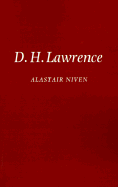10 - Lady Chatterley's Lover
Published online by Cambridge University Press: 04 April 2011
Summary
After Mexico, the Lawrences lived entirely in Europe. Though their longest sojourn was at the Villa Mirenda, just outside Florence, these last four years of Lawrence's life were essentially peripatetic: astonishingly so for a man slowly dying. They visited Frieda's mother in Baden-Baden, returned briefly to England, stayed in Paris, in Majorca and finally in Vence, in the Alpes Maritimes, southern France, where, on 2 March 1930, D. H. Lawrence died. We should not be surprised that in this unsettled final period of his life Lawrence should look nostalgically yet critically at his own country, where he could no longer endure to live. Lady Chatterley's Lover, first published in 1928, is a sustained lament for that broken society. Yet Lawrence, even when mortally ill, refused to slide into total despair. A threnody upon dead England might have had the dignity of an obsequy or the bitterness of total disillusionment, but it could hardly have had the visionary determination which illuminates this last novel. For that is the character of Lawrence's vision now: a will to see some alternative to the impotent mechanization of modern living.
Lawrence had been seeking an alternative in several of his last stories (St Mawr and ‘The Woman Who Rode Away’ are both set in Plumed Serpent territory: deserts far from modern society) as well as in Aaron's Rod, Kangaroo and The Plumed Serpent; he had tested the possibilities of spiritual regeneration through the inspiration of potent leadership.
- Type
- Chapter
- Information
- D. H. LawrenceThe Novels, pp. 175 - 186Publisher: Cambridge University PressPrint publication year: 1978
- 1
- Cited by



